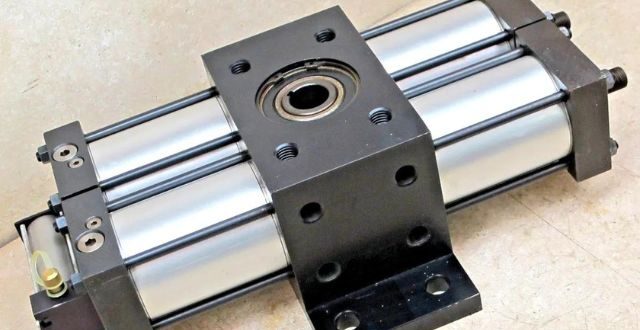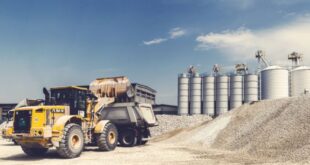Actuators are critical components in various industrial, automotive, aerospace, and consumer applications. They play a pivotal role in converting energy into mechanical motion, enabling the movement of everything from robotic arms to aircraft flaps.
When it comes to purchasing actuators, understanding the different types and their applications is essential. But before you buy actuators from ocpneumatics.com or other reliable online retailers, here are the various aspects you should know about them, along with information that will help you make informed decisions as per your specific needs.
Types of Actuators
Actuators come in various forms, each tailored to specific applications and operating principles. Here are some of the most common types:
Electric Actuators
Electric actuators are versatile and widely used. They rely on electrical energy to produce linear or rotary motion. These actuators can be further classified into two main categories:
a. Linear Electric Actuators
Linear electric actuators, also known as electric cylinders, are designed to create linear motion. They are ideal for applications requiring precise control of movement, such as automated manufacturing and medical devices.
b. Rotary Electric Actuators
Rotary electric actuators, on the other hand, provide rotational motion. They find applications in steering systems, valve control, and robotics.
Hydraulic Actuators
Hydraulic actuators use pressurized fluid, typically oil, to generate motion. They are known for their high force output and are commonly used in heavy machinery and construction equipment.
Pneumatic Actuators
Pneumatic actuators make use of compressed air to create motion. They are lightweight, cost-effective, and suitable for tasks like opening and closing valves, controlling dampers, and actuating HVAC systems.
Piezoelectric Actuators
Piezoelectric actuators operate on the piezoelectric effect, where the material deforms when subjected to an electrical field. They are used in precision applications such as nanopositioning, scanning microscopy, and semiconductor manufacturing.
Stepper Motor Actuators
Stepper motor actuators provide precise control over rotational motion. They are commonly used in 3D printers, CNC machines, and robotics, where accurate positioning is crucial.
Considerations for Choosing the Right Actuator
Selecting the appropriate actuator for your specific application requires careful consideration of several factors, including the ones mentioned below.
Load and Force Requirements
Determine the amount of force your actuator needs to exert to perform its task effectively. Take into account both stationary and moving forces to ensure the actuator can withstand the necessary loads.
Speed and Precision
Evaluate the required speed and precision of the motion. Some applications demand rapid movement, while others require slow and precise positioning. Choose an actuator that matches these requirements.
Environmental Conditions
Consider the environment in which the actuator will operate. Factors such as temperature extremes, humidity, and exposure to contaminants can influence your choice of actuator materials and sealing options.
Power Source
Select an actuator that aligns with your available power source. Electric actuators require electricity, while hydraulic and pneumatic actuators need appropriate fluid sources. Ensure compatibility with your existing infrastructure.
Maintenance and Reliability
Assess the maintenance requirements of the chosen actuator type. Some actuators may need periodic lubrication, while others are virtually maintenance-free. Choose a reliable and durable option for long-term use.
Size and Form Factor
Consider the actuator’s physical size and shape, especially if space is limited. Miniature actuators are available for applications with tight constraints.
Cost
Budget constraints are always a consideration. While staying within budget is important, prioritize quality and performance to avoid costly replacements and downtime in the long run.
Applications of Actuators
Now that you have a better understanding of the types and factors to consider when purchasing actuators, here are some common applications.
Robotics
Actuators are the muscles of robots, enabling them to move and manipulate objects. Electric and pneumatic actuators are frequently used in robotics for their precision and versatility.
Industrial Automation
Industrial processes often rely on actuators to control valves, conveyors, and other machinery. Electric and hydraulic actuators play a crucial role in automating these processes.
Aerospace
Aerospace applications, including aircraft control surfaces and landing gear, rely on hydraulic actuators for their high force output and reliability.
Automotive
In the automotive industry, actuators are found in various systems, from power windows and door locks to engine control valves. Electric and hydraulic actuators are commonly used.
Medical Devices
Precision is paramount in medical devices. Linear electric actuators are used in devices like infusion pumps and robotic surgery systems for their accuracy and repeatability.
Consumer Electronics
Actuators are present in everyday consumer products, such as smartphones with haptic feedback and autofocus camera mechanisms.
Purchasing the right actuator is crucial for the success of your project or application. By understanding the different types of actuators and considering factors like load requirements, speed, and environmental conditions, you can make an informed decision.
 khamush.com Lifestyle | Motivation | Poems
khamush.com Lifestyle | Motivation | Poems




